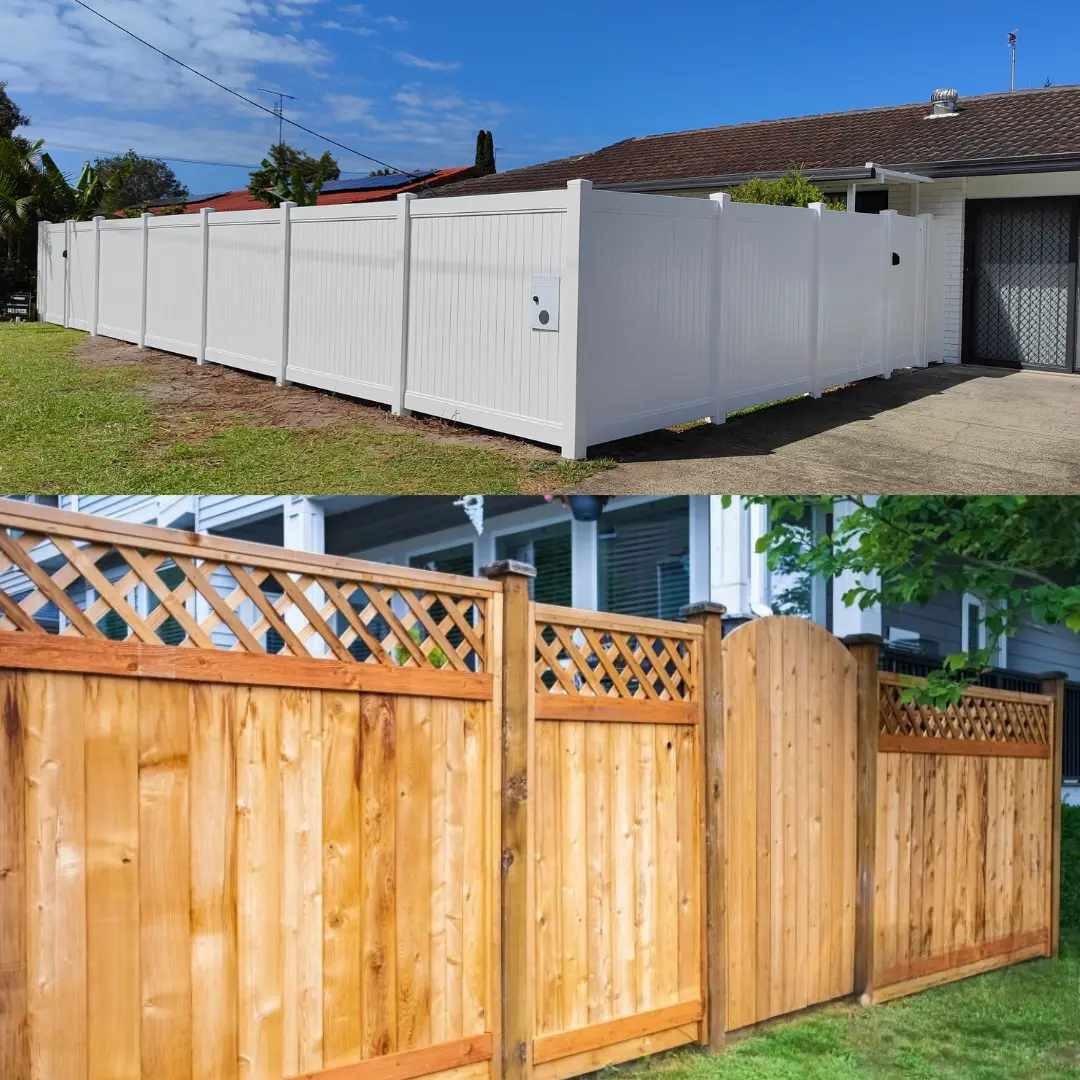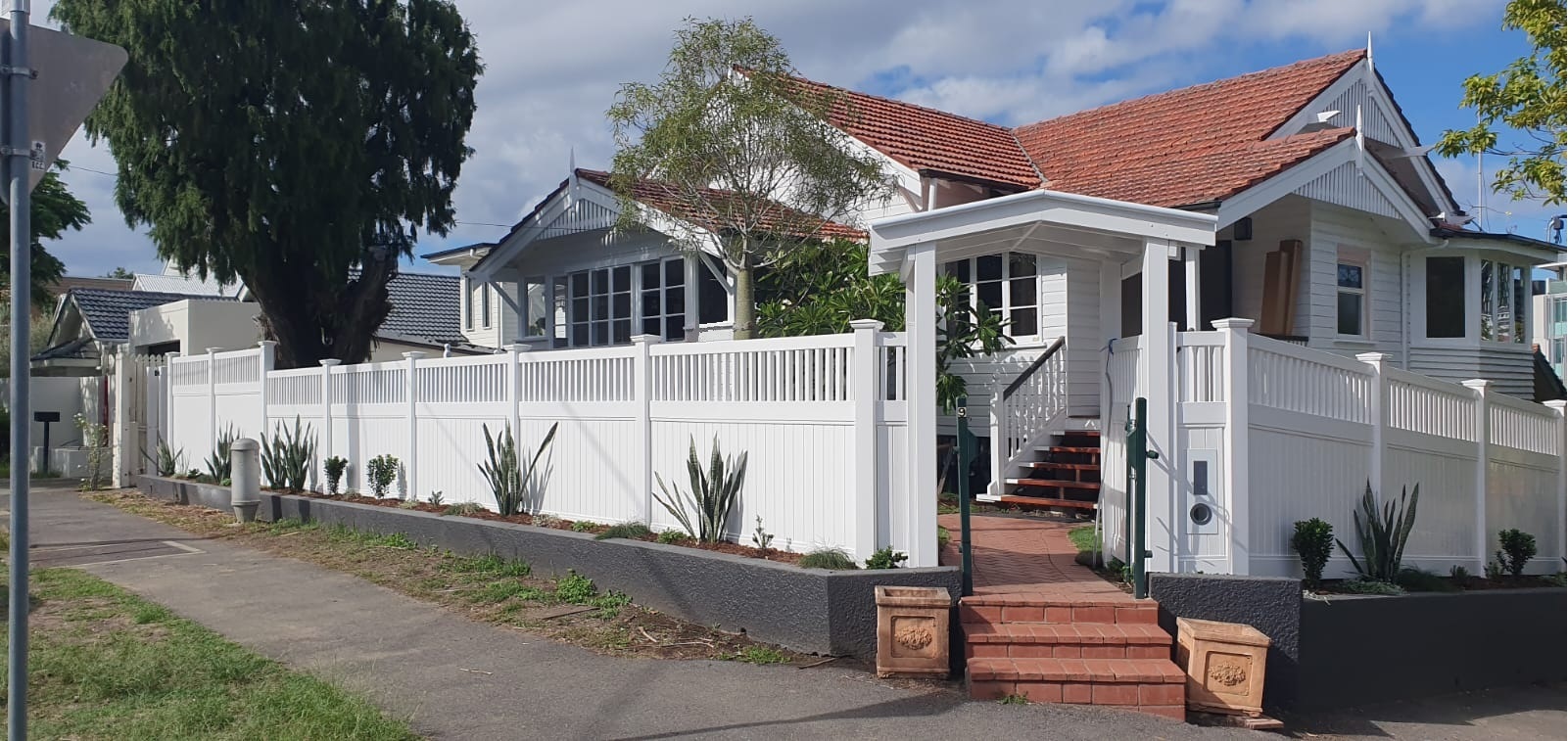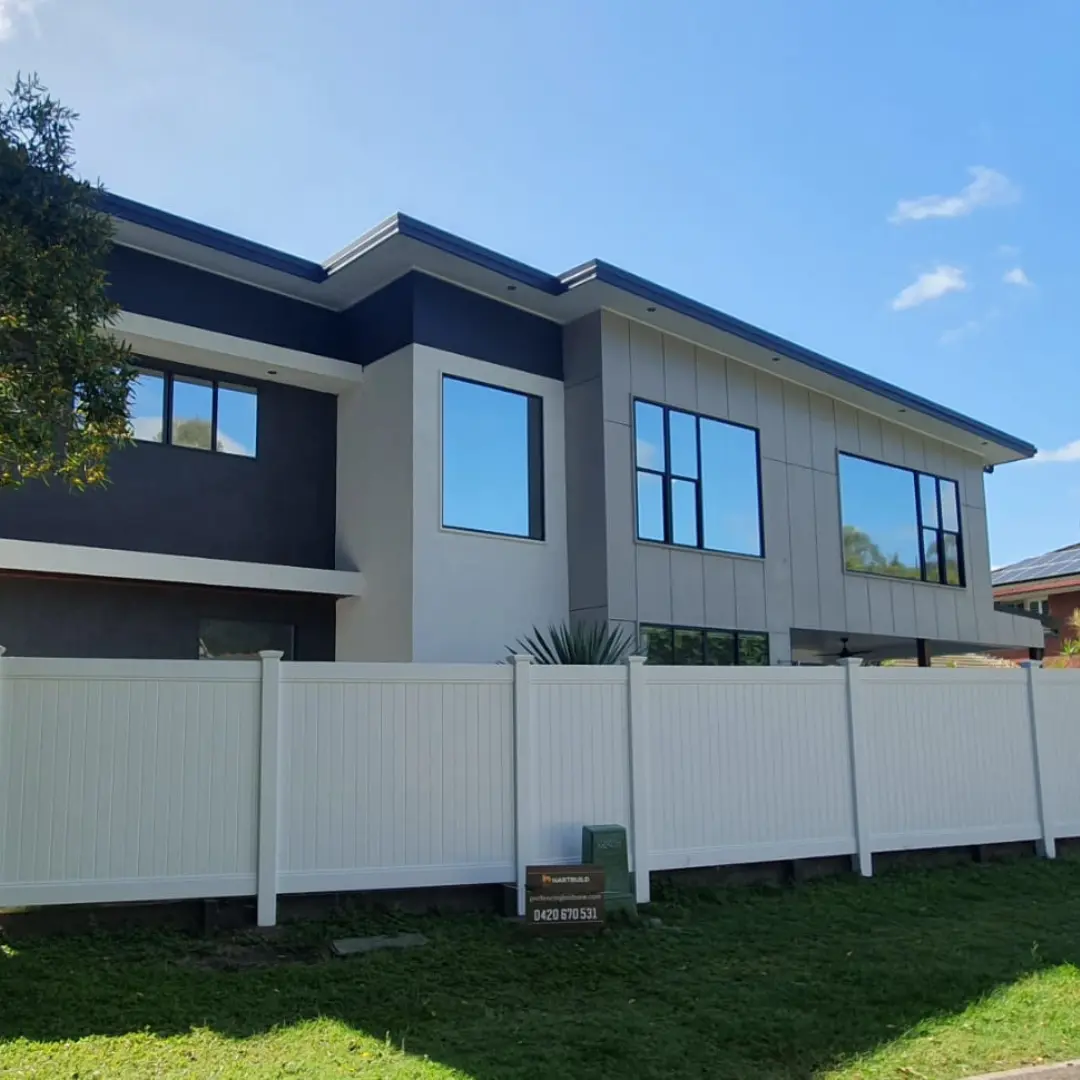Is PVC Fencing or Traditional Timber Fencing better for my home? Choose PVC fencing because for it’s low-maintenance, durable option with a modern design. Choose traditional timber fencing for a classic and natural-looking appearance.
At Hartbuild PVC Fencing, we understand how important it is to find the right fencing for your home or business. With years of expertise in providing high-quality PVC fencing solutions across Queensland, we are here to guide you every step of the way.
In this article, we will explore the key differences between PVC and timber fencing, including their benefits, costs, and environmental impact. By the end, you’ll have a clear understanding of which fencing option suits your property best.
What is a PVC Fence?
A PVC (polyvinyl chloride) fence is a modern fencing material made from durable plastic. It is highly resistant to weathering, making it a popular choice in harsh climates.
Benefits of PVC Fencing:
- Durability: Withstands rain, wear and tear, and UV exposure without warping or rotting.
- Low Maintenance: No need forpainting, staining, or annual maintenance—a simple clean with soap and water keeps it looking new.
- Sleek Design: PVC offers a range of styles, from privacy fences to picket fences, ensuring aesthetic versatility.
- Environmentally Friendly: PVC fences are recyclable, reducing their environmental footprint.
- Weather Resistance: Resistant to mildew, termites, and Queensland’s harsh conditions.
PVC fencing combines strength, ease of care, and versatility, making it a practical choice for homeowners. For more insights, check out our article, ‘The Benefits of PVC Fencing for Pet Owners‘
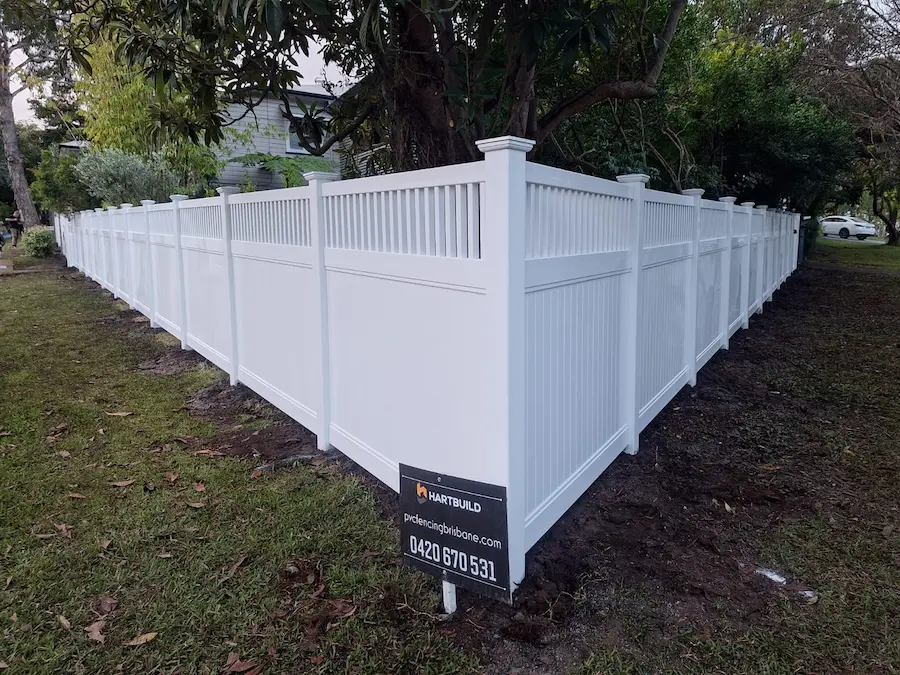
What is a Timber Fence?
A timber fence is a traditional fencing option made from wood such as pine, hardwood, or softwood. Its natural appearance makes it a popular choice for enhancing outdoor aesthetics.
Benefits of Timber Fencing:
- Natural Appeal: Adds a classic, rustic charm that complements any landscape.
- Customisation: Can be painted, stained, or enhanced with decorative features like lattice tops.
- Affordable Upfront Cost: Generally less expensive than PVC fencing initially.
- Eco-Friendly: Sustainably sourced timber is renewable and biodegradable.
Timber fencing offers versatility and affordability, making it a favored option for those seeking a natural look.
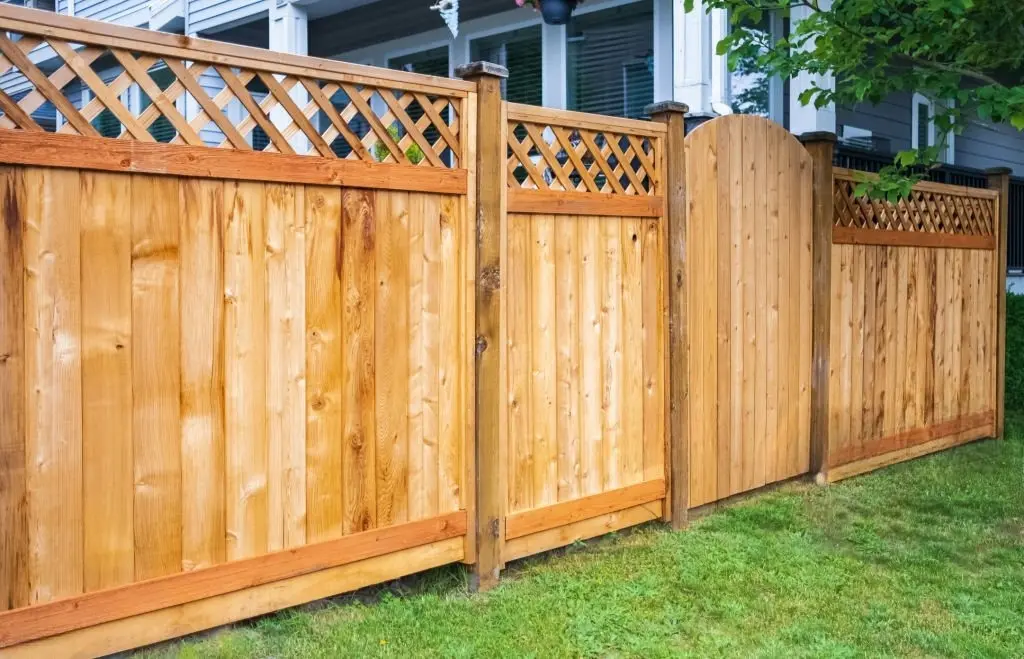
Key Differences Between PVC and Timber Fencing
1. Aesthetic Appeal
Whiletimber fences offer a warm, natural look, PVC fences deliver a sleek, modern design. If you’re looking for the “look of wood” without ongoing upkeep, PVC may be a better choice.
2. Durability and Longevity
PVC fences can last up to 50 years, resisting weathering and termites. In contrast, timber fences, even when treated with wood preservation methods, may succumb to rot and pests within 15-20 years.
3. Maintenance
A timber fence requires regular painting or staining to withstand weather and maintain its appearance. Conversely, PVC fences are nearly maintenance-free and don’t require coating or annual maintenance.
4. Environmental Impact
Timber fencing, especially when sustainably sourced, is more environmentally friendly than PVC, though PVC can be recycled. Consider your priorities when weighing the environmental pros and cons.
5. Cost
While timber fences are initially more affordable, PVC fences save money long-term due to their minimal maintenance needs and longevity.
6. Weather Resistance
PVC is better suited to Queensland’s climate as it resists rain, mildew, and UV rays. Timber is more likely to warp or crack in such conditions.
7. Installation
PVC fencing is lightweight and easy to install, often requiring fewer tools and less labour compared to timber fencing, which can be heavier and more complex to assemble.
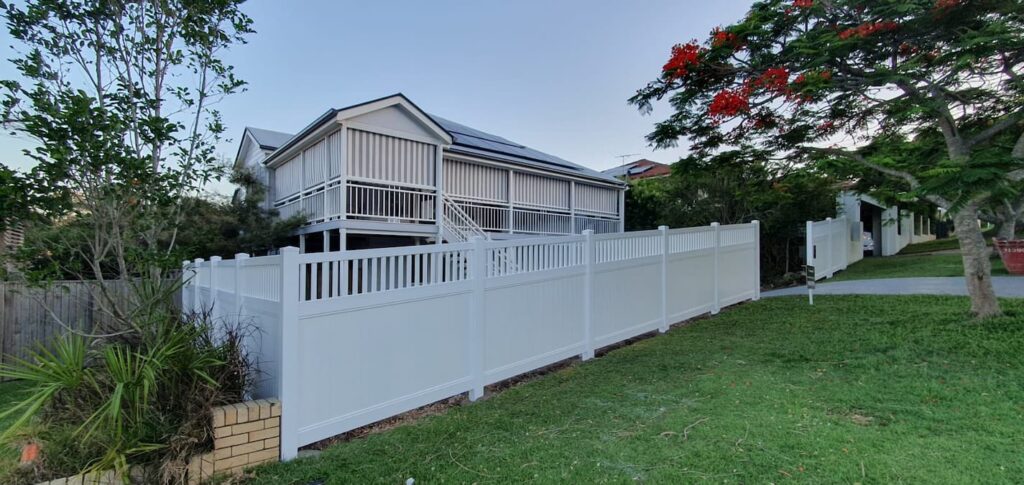
Pros and Cons of PVC and Timber Fencing
Making the right choice between PVC and timber fencing depends on your style preferences, budget, and maintenance needs. Here’s a clear and simple comparison of the advantages and disadvantages of both options:
| Fencing Type | Pros | Cons |
|---|---|---|
| PVC Fencing | – Requires minimal maintenance (no painting or staining) – Durable and weather-resistant – Available in various styles – Does not rot or attract termites – Easy to install | – Higher upfront cost than some timber options – Limited ability to change color after installation – Lacks the natural look some homeowners prefer |
| Timber Fencing | – Offers a classic, natural appearance – Allows versatile designs – Can be customized with paint or stain – Often has lower initial costs | – Needs regular maintenance (painting, sealing) – Susceptible to rot, termites, and weather damage – Shorter lifespan with higher ongoing costs |
This table helps you weigh the benefits and challenges of timber and PVC fencing. Choose the option that aligns with your priorities for aesthetics, durability, and cost.
Cost Breakdown: PVC vs. Timber Fencing
Understanding the cost differences between PVC and timber fencing is essential for budget planning. This comparison outlines upfront expenses, maintenance, lifespan, and other factors to help you make an informed decision.
| Factor | PVC Fencing | Timber Fencing |
|---|---|---|
| Upfront Costs | Higher initial cost, but offers long-term savings due to minimal upkeep. | Lower initial cost, though quality hardwoods can be more expensive. |
| Maintenance Costs | Very low—requires only occasional washing; no need for painting or staining. | High—requires regular painting, staining, and inspections for damage or pests. |
| Lifespan | Lasts 20–30 years or more with minimal care. | Typically lasts 10–15 years with proper maintenance, but varies based on wood type and exposure to elements. |
| Repairs & Replacements | Rare, as PVC resists rot, warping, and termite damage. | Frequent repairs may be needed due to warping, rot, or termites. |
| Environmental Impact | Eco-friendly options available with recycled PVC; no chemical treatments required for pests. | Renewable resources are responsibly sourced, but chemical treatments for pest control are often necessary. |
| Overall Cost Efficiency | Higher initial cost, offset by significant long-term savings on maintenance and repairs. | Lower upfront cost, but ongoing maintenance and potential early replacements can make it more expensive over time. |
This breakdown highlights how PVC fencing’s durability and low maintenance often outweigh its higher upfront cost, while timber fence is cheaper and may lead to increased expenses in the long run.
Ease of Installation: PVC vs. Timber Fencing
Installing a fence can be a manageable DIY project for those with the skills and time, but many Queenslanders prefer hiring professionals, especially for larger or commercial installations. Here’s how PVC and timber fencing compare in terms of ease of installation:
| Fencing Type | Ease of Installation |
|---|---|
| PVC Fencing | – Easier to install, as PVC fence panels often slot together seamlessly. – Posts are straightforward to set in concrete. |
| Timber Fencing | – Requires more precision for alignment and may need additional tools for cutting, shaping, and securing. |
For commercial properties, the installation process is more complex. It may involve adhering to council regulations, ensuring adequate security, and managing the larger scale of the project. In these cases, professional installers are highly recommended to ensure the job is done correctly and meets all requirements.
Conclusion
The choice between PVC and timber fencing depends on your priorities. For a long-lasting, low-maintenance solution, PVC fencing stands out as the better than timber option. If you prefer a classic, natural appearance and don’t mind regular upkeep, timber fencing is a great alternative.
At Hartbuild PVC Fencing, we offer premium PVC fencing that combines durability, style, and convenience. Whether you’re enhancing your home or securing business property, our expert team is ready to assist. Contact Hartbuild PVC Fencing today for professional advice, a diverse selection of fencing solutions, and top-quality installation services.
People Also Ask
How strong is PVC compared to timber?
PVC fencing is highly durable and resists splitting or cracking under normal conditions, especially when reinforced with sturdy posts and rails. Timber can also be strong but may weaken over time without proper care.
What is the expected lifespan of each material?
PVC fences typically last 20–30 years or more with minimal maintenance. Timber fences, with regular upkeep and quality treatments, usually last around 10–15 years, though high-quality wood may extend this lifespan.
How do these materials handle weather exposure?
- PVC: Highly weather-resistant, won’t rot, warp, or attract termites, making it ideal for various climates.
- Timber: Can withstand moderate weather if treated properly but is prone to warping, rotting, and termite damage in humid or rainy environments.
Which is more environmentally friendly?
Sustainably sourced timber is the eco-friendlier choice, but recycled PVC options provide an environmentally conscious alternative for those prioritizing long-term durability.

